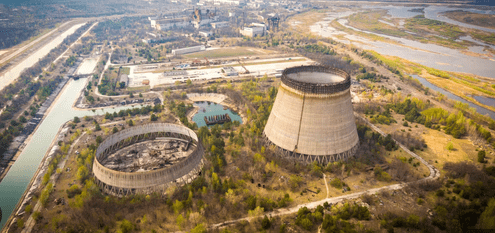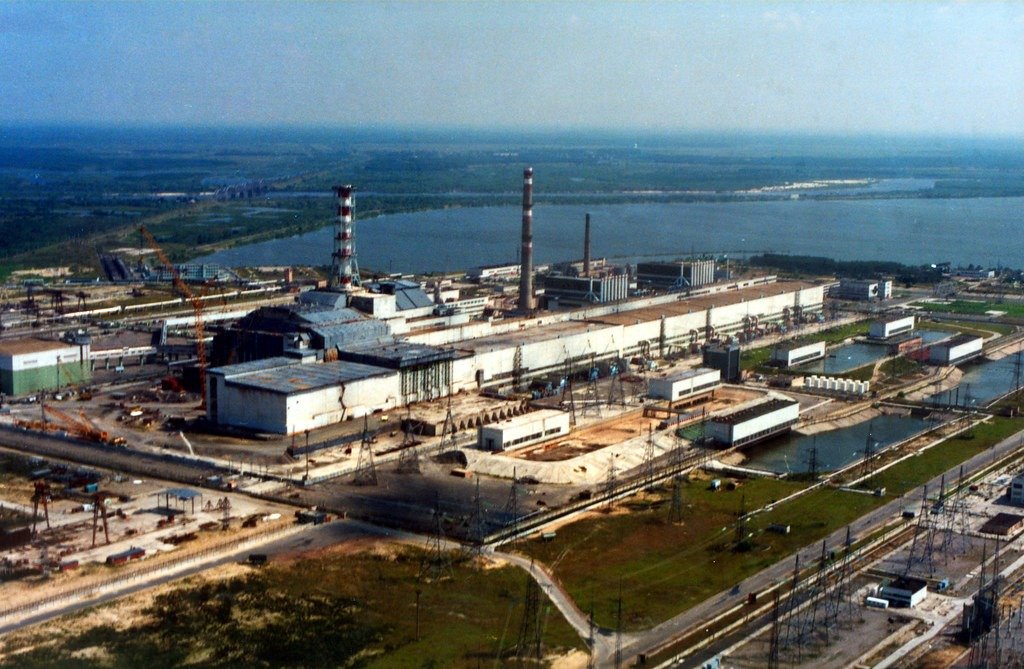Kyiv, April 13, 2025 – The Chernobyl nuclear disaster site, a haunting relic of the 1986 catastrophe, is once again at the center of global concern. A recent Russian drone attack has damaged the protective confinement vessel encasing the infamous Reactor No. 4, raising fears about nuclear safety in an already volatile region. As Ukraine grapples with the ongoing war, the incident underscores the fragile state of Chernobyl’s infrastructure and the urgent need for international intervention to prevent another environmental disaster.

Drone Strike Shatters Chernobyl’s Protective Shield
The Chernobyl exclusion zone, a 30-kilometer radius around the defunct nuclear power plant, has long been a symbol of human resilience and tragedy. The New Safe Confinement, a massive steel structure completed in 2016 to contain radioactive remnants, was designed to withstand natural disasters and ensure safety for a century. However, it was not built to endure modern warfare. On April 10, 2025, a Russian drone struck the confinement vessel, creating a significant breach that has compromised its ability to contain radioactive dust and debris.
Ukrainian officials, led by Minister of Environmental Protection and Natural Resources Svitlana Grynchuk, confirmed the damage during a press briefing in Kyiv. The attack has sparked outrage, with authorities describing it as a reckless escalation that endangers not only Ukraine but neighboring countries. The breach could allow radioactive particles to escape, potentially contaminating air and water sources across Eastern Europe.
A History of Vulnerability at Chernobyl
Chernobyl’s history is marred by catastrophe and conflict. The 1986 explosion released a radioactive cloud that affected millions, leaving a legacy of health issues and environmental devastation. Decades later, the site remains a delicate balance of containment and caution. Russian forces briefly occupied the exclusion zone in 2022, looting equipment and disrupting monitoring systems. Workers at the time reported chaotic conditions, with fears that mishandling could trigger new risks.
The latest incident adds to these concerns. The damaged confinement vessel, meant to prevent leaks for another 60 years, now faces an uncertain future. Experts warn that without swift repairs, seasonal winds could carry radioactive materials beyond the exclusion zone, reviving memories of the original disaster’s far-reaching impact.

Ukraine’s Race Against Time
In response to the attack, Ukraine is mobilizing resources to assess and repair the damage. Engineers and nuclear safety experts are working under heightened security to evaluate the breach’s extent. The government has appealed for international aid, emphasizing the need for specialized equipment and expertise. However, the ongoing war complicates these efforts, with supply chains disrupted and the region under constant threat of further strikes.
Local scientists have also raised alarms about the exclusion zone’s ecosystem. Despite its radioactive past, Chernobyl has become a unique wildlife sanctuary, home to rare species thriving in the absence of human activity. A potential leak could disrupt this delicate balance, threatening biodiversity and undoing decades of natural recovery.
Global Implications of the Chernobyl Threat
The drone attack has reignited debates about the intersection of warfare and nuclear safety. Chernobyl, already a cautionary tale, now serves as a stark reminder of how modern conflicts can amplify environmental risks. The International Atomic Energy Agency has called for an immediate ceasefire around the site, urging all parties to prioritize humanitarian and ecological concerns.
Neighboring countries, including Poland and Belarus, are closely monitoring air quality and radiation levels. While no immediate spikes have been reported, the possibility of contamination has prompted contingency plans, including public health advisories and emergency response drills. The incident has also fueled discussions about reinforcing protections for nuclear sites in conflict zones, a topic likely to dominate upcoming global summits.

A Call for Unity and Action
As Ukraine confronts this new crisis at Chernobyl, the world watches with bated breath. The damaged confinement vessel is more than a structural failure; it’s a symbol of humanity’s ongoing struggle to contain the consequences of its past. For local communities, the threat of renewed contamination stirs painful memories of displacement and loss.
The path forward requires global cooperation. Ukraine’s plea for assistance highlights the shared responsibility to safeguard Chernobyl’s legacy. Whether through funding, technical support, or diplomatic pressure, the international community must act swiftly to prevent a catastrophe that transcends borders.
Chernobyl’s story is one of resilience, but also fragility. As the damaged structure stands exposed, it serves as a warning: the scars of 1986 remain, and without vigilance, they could wound again. For now, Ukraine’s efforts to secure the site continue, a testament to the enduring human spirit in the face of adversity.
I am a passionate digital marketer, content writer, and blogger. With years of experience in crafting compelling content and driving digital strategies. I’m always exploring new trends, optimizing strategies, and creating content that resonates with audiences. When I’m not working, you’ll find me diving into the latest digital marketing insights or experimenting with new blogging ideas.